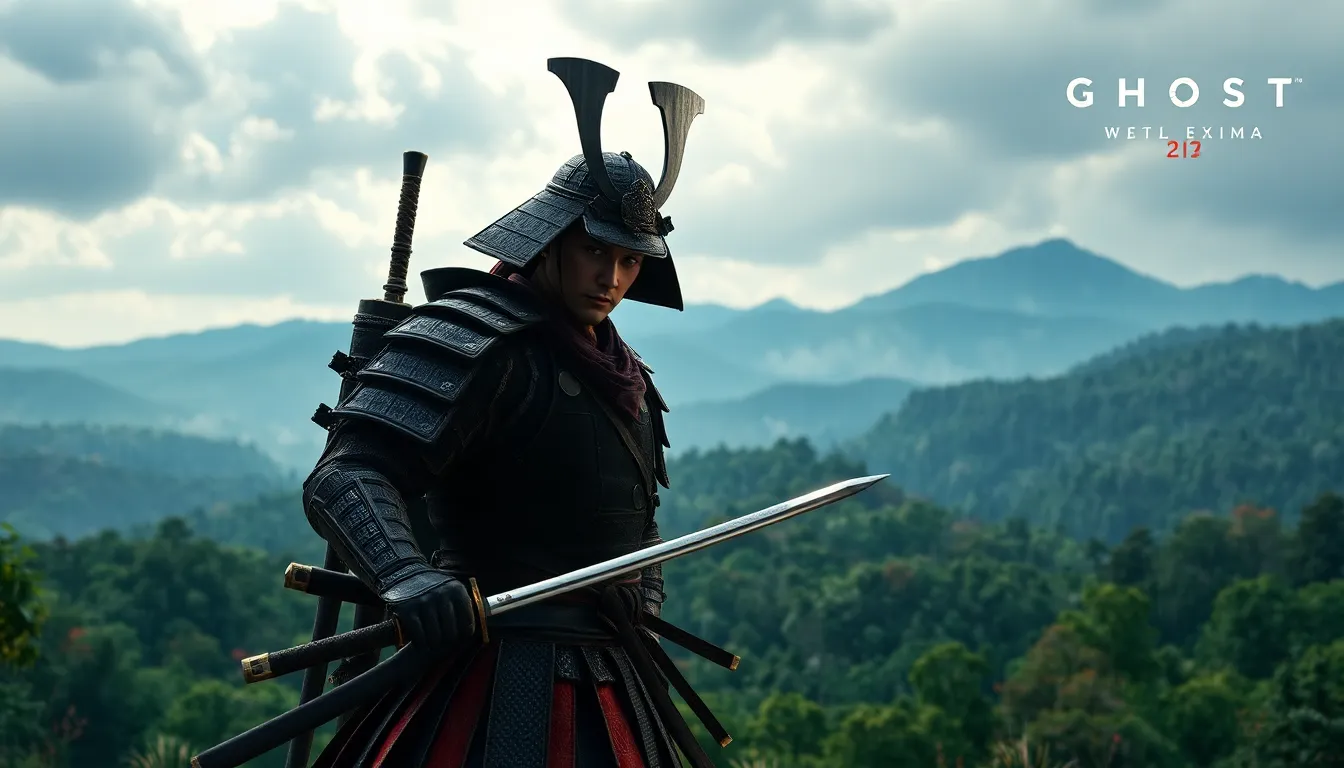Table of Contents
ToggleIn a world where samurai honor clashes with the chaos of invading forces, Ghost of Tsushima on PS4 transports players to a visually stunning feudal Japan. Picture this: you’re a lone warrior trying to save your homeland from Mongol invaders, all while mastering the art of stealth and swordplay. Sounds epic, right?
Overview of Ghost of Tsushima PS4
“Ghost of Tsushima” immerses players in the richly detailed world of feudal Japan. Players take on the role of Jin Sakai, a samurai warrior dedicated to protecting Tsushima Island from Mongol invaders. The game features an open-world environment that encourages exploration, allowing players to discover various regions, secrets, and side quests.
Combat mechanics blend stealth and swordplay, granting players the ability to choose their fighting style. Jin can engage enemies directly or use stealth strategies to navigate through enemy territories. Additionally, players can customize upgrades for Jin’s weapons and abilities, enhancing combat effectiveness.
Visually, “Ghost of Tsushima” stands out with stunning graphics. The art direction captures the beauty of landscapes, from lush forests to expansive fields. Weather effects and dynamic lighting further enrich the player’s visual experience. Sound design complements gameplay, with a powerful score and realistic environmental sounds.
The narrative explores themes of honor, sacrifice, and identity. As Jin grapples with the traditional samurai code, his journey reflects the internal conflict between honor and the necessity of change. Multiple story arcs and character interactions create a rich narrative structure that engages players thoroughly.
“Ghost of Tsushima” offers a unique experience that combines historical elements with captivating gameplay. Its lush graphics, engaging story, and deep combat mechanics position it as a standout title on the PS4. Players appreciate the nuanced portrayal of the samurai’s struggle in a time of chaos and transformation.
Gameplay Mechanics

“Ghost of Tsushima” combines several gameplay mechanics that enhance the player’s experience in feudal Japan. The blend of combat and exploration allows for varied and immersive play.
Combat System
The combat system features a mix of swordplay and stealth. Players can engage in direct confrontations using katana techniques, allowing for fluid, skill-based attacks. Stealth mechanics offer an alternative approach, enabling players to utilize distractions and stealth kills. Each enemy type requires different strategies, which encourages adaptability. Jin can also learn new techniques through a skill progression system, enhancing combat dynamics. Customization of abilities and weapons further personalizes the combat experience.
Exploration and Open World
The open world of Tsushima invites exploration with stunning landscapes and multiple regions. Players can discover hidden secrets and side quests throughout various environments, from lush forests to mountainous terrains. Engaging with the environment provides materials for upgrades and enhances gameplay. The inclusion of a wind guidance system helps players navigate without intrusive on-screen markers. Environmental storytelling immerses players in the lore and culture of feudal Japan. Dynamic weather impacts visibility, adding additional layers of realism to exploration.
Visuals and Sound Design
“Ghost of Tsushima” captivates with its remarkable visuals and immersive sound design. These elements significantly enhance the overall gaming experience.
Graphics Quality
Graphics quality in “Ghost of Tsushima” stands out with its vibrant color palette and intricate details. Lush landscapes showcase meticulously crafted trees, fields, and mountains. Each environment reflects the beauty of feudal Japan, contributing to visual storytelling. Dynamic lighting effects create mood and atmosphere, further engaging players in the experience. High-resolution textures elevate character models, making every samurai and adversary feel alive. These graphical elements ensure a memorable journey through Tsushima’s open world.
Soundtrack and Voice Acting
The soundtrack features a beautiful blend of traditional Japanese music and sweeping orchestral compositions. This audio design complements the game’s emotional landscapes, enhancing pivotal moments in the narrative. Voice acting adds depth to character interactions, with performances conveying a range of emotions. Characters resonate with players, making Jin’s journey and struggles feel authentic. Environmental sounds, such as rustling leaves and distant waves, immerse players, grounding them in the game’s world. Collectively, these auditory elements create a rich soundscape that elevates the gameplay experience.
Story and Characters
“Ghost of Tsushima” unfolds as Jin Sakai grapples with the invasion of Mongol forces on Tsushima Island. The narrative centers on his quest to protect his home while navigating the tumultuous conflict between maintaining samurai honor and adapting to new tactics.
Main Plotline
The main plotline follows Jin’s transformation from a traditional samurai into the “Ghost,” a shadowy figure who employs unconventional methods to combat the Mongols. As he encounters various allies and adversaries, he faces moral dilemmas and personal sacrifices that challenge his beliefs. The story explores themes of honor, identity, and the repercussions of war, culminating in a battle for the soul of Japan. Jin’s journey intertwines with historical events, creating a rich tapestry that captivates players and emphasizes the cost of resistance.
Key Characters
Jin Sakai serves as the protagonist and a steadfast samurai committed to his family’s legacy. His uncle, Lord Shimura, represents traditional values and the samurai code. Meanwhile, allies like Yuna, a resourceful thief, help Jin embrace stealth and adaptability in his fight. The enigmatic Mongol leader, Khotun Khan, acts as the primary antagonist, driven by ambition and conquest. Each character adds depth to the narrative, illustrating the complex relationships and conflicting ideologies that shape Jin’s journey and the broader struggle against the Mongol invasion.
Reception and Impact
“Ghost of Tsushima” received widespread recognition for its artistic and gameplay achievements. Players and critics alike praised the game’s engaging combat and rich storytelling.
Critical Acclaim
The game achieved high scores across numerous review platforms, earning an average Metacritic score of 83. Critics highlighted the blend of gameplay elements, from sword fighting to stealth mechanics. Players appreciated the detailed open world, which fosters exploration and discovery. The art direction received accolades for its vibrant graphics and atmospheric environments, capturing the essence of feudal Japan. Award nominations included Best Game at The Game Awards, showcasing its impact within the gaming community.
Community Response
The player base responded enthusiastically, discussing its themes of honor and sacrifice in various forums. Many fans expressed admiration for the game’s depiction of Japanese culture and history. The title sparked conversations about the balance between tradition and innovation, resonating with audiences worldwide. Community events and fan art flourished, reflecting the cultural appreciation surrounding the game. Overall, the strong community engagement highlighted its lasting impact and relevance in the gaming landscape.
“Ghost of Tsushima” stands out as a remarkable achievement in gaming. Its blend of stunning visuals and immersive storytelling creates a unique experience that resonates with players. The dynamic combat system and rich open world invite exploration while encouraging players to adapt their strategies.
Jin Sakai’s journey from samurai to the “Ghost” captures the essence of honor and sacrifice, making it a compelling narrative. The game’s artistic direction and sound design further enhance its impact, ensuring it remains a memorable title on the PS4.
As players navigate the challenges of feudal Japan, they engage with themes that provoke thought and discussion, solidifying “Ghost of Tsushima” as a significant contribution to the gaming landscape.







